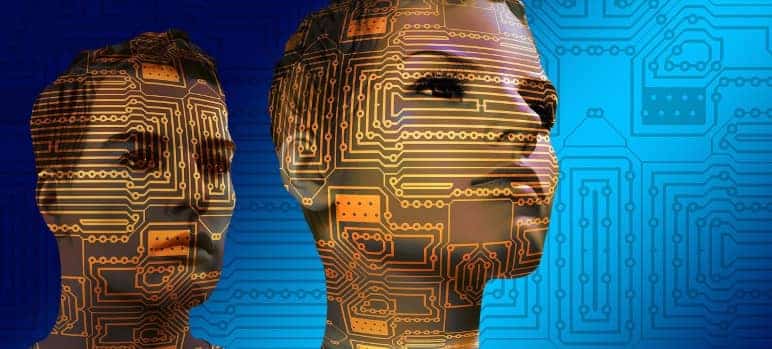
Table of Contents
How Artificial Intelligence in Business is Transforming the Future of Jobs
Artificial Intelligence (AI) is revolutionizing how businesses operate and reshaping the global workforce. This article explores strategic steps for successful AI integration—from defining clear objectives and building quality data infrastructure to fostering a culture of AI adoption and ethical responsibility. Companies are encouraged to start with small AI projects, monitor performance, and balance automation with human expertise to drive sustainable innovation.
The second part of the article examines the causes and effects of AI’s impact on jobs. Technological advancements, cost efficiency, and the explosion of data are key drivers of AI adoption. While AI may displace roles involving routine tasks, it also creates opportunities by transforming existing jobs and generating new roles in fields like data science and AI ethics.
The article emphasizes the importance of reskilling and lifelong learning to bridge the growing skill gap. Without proper intervention, AI may worsen economic inequality, especially among low-skill workers. However, with proactive planning and collaboration among businesses, governments, and individuals, AI can lead to a more efficient, equitable, and innovative future.
Whether you’re a business leader, employee, or policymaker, this article provides practical insights to prepare for the AI-driven future of work.
8 Steps to Integrate Artificial Intelligence in Business
1. Define Clear Objectives
Before integrating AI into your operations, clearly define your objectives and what you aim to achieve. Identify specific use cases where AI can add value and address business challenges. Setting well-defined goals will help align AI initiatives with your overall business strategy.
We also build quality data infrastructure, as AI thrives on data, and the quality of our data infrastructure is crucial for successful AI implementation. Ensure that you have clean, relevant, and diverse datasets to train your AI models effectively. Implement robust data governance practices to maintain data accuracy and security.
We should select the right AI model—the appropriate AI model is paramount to success. Consider factors such as the complexity of the problem, the nature of your data, and the required level of accuracy. Experiment with different AI models and techniques to find the one that best suits your needs.
2. Foster a Culture of AI Adoption
Driving successful AI adoption requires a supportive organizational culture. Educate your teams about the benefits of AI, and encourage a willingness to embrace new technologies. Provide training and resources to help employees understand and effectively use AI tools.
3. Start with Small Projects
Embarking on large-scale AI projects can be overwhelming. Start with small projects to test the effectiveness of AI solutions and assess their impact on your operations. Gradually expand AI integration based on the lessons learned from these pilot projects.
4. Monitor and Improve AI Performance
AI systems require continuous monitoring and refinement. Keep track of AI performance metrics and regularly update your models to accommodate changing data and business requirements. This iterative process ensures your AI stays relevant and accurate.
5. Balance Automation with Human Expertise
AI is a powerful tool, but it should not replace human expertise entirely. Identify areas where AI can automate repetitive tasks and streamline processes, but always ensure there is room for human oversight and decision-making.
6. Address Ethical Concerns
Prioritize ethics and fairness in your AI implementation to avoid unintended consequences.
7. Collaborate with Experts
Collaborating with AI and data scientists can significantly enhance your AI initiatives. If you lack in-house expertise, consider partnering with AI consulting firms or hiring data science talent to guide your AI strategy effectively.
8. Embrace Continuous Learning
AI technology evolves rapidly, so staying updated with the latest advancements and best practices is essential. Encourage a culture of continuous learning within your organization to maximize the value of your AI investments.
The Impact of AI on Future Jobs: Causes and Effects
The rise of artificial intelligence (AI) is fundamentally reshaping the future of work, creating both opportunities and challenges. Understanding the causes and effects of this transformation is crucial for individuals and societies alike.
Causes of AI’s Impact on Jobs
Technological advancements – Rapid progress in AI, particularly in machine learning and deep learning, has enabled machines to perform tasks previously requiring human intelligence. This includes complex tasks like image recognition, natural language processing, and decision-making.
Cost efficiency – AI-powered automation often offers significant cost savings for businesses. Replacing human labor with AI can reduce payroll expenses, improve productivity, and operate 24/7 without breaks.
Increased demand for efficiency and productivity – Globalization and intense competition are driving businesses to seek greater efficiency and productivity. AI provides a powerful tool to achieve these goals, leading to its widespread adoption.
Exponential growth of data – The surge in data provides the fuel for AI. The more data available, the more sophisticated and effective AI systems become, further accelerating their impact on jobs.
Effects of AI on Jobs
Job displacement – AI-driven automation is likely to displace workers in sectors heavily reliant on routine and repetitive tasks. This includes manufacturing, data entry, customer service, and transportation. However, the extent of job displacement is a subject of ongoing debate, with some experts predicting significant job losses while others argue that AI will create more jobs than it destroys.
Job transformation – Many jobs will not be entirely replaced but will be significantly transformed. AI will augment human capabilities, allowing workers to focus on more complex and creative tasks. For example, doctors may use AI for diagnostics, freeing up time for patient interaction.
New job creation – The development, implementation, and maintenance of AI systems will create new job roles. This includes AI engineers, data scientists, AI ethicists, and AI trainers. These roles will require specialized skills and expertise.
Skill gaps and the need for reskilling/upskilling – The changing job market necessitates a focus on lifelong learning and reskilling/upskilling. Workers will need to adapt to new technologies and acquire skills complementary to AI. This includes developing critical thinking, problem-solving, and creativity skills, which are less susceptible to automation.
Economic inequality – The impact of AI on jobs may exacerbate existing economic inequalities. Workers in high-skill jobs may benefit from AI, while those in low-skill jobs may face displacement without adequate support for retraining or alternative employment.
Conclusion
AI’s impact on future jobs is a complex and multifaceted issue. While job displacement is a concern, the potential for new job creation and job transformation is significant. Adapting to this changing landscape requires proactive measures from individuals, businesses, and governments to ensure a smooth transition and equitable distribution of benefits.



